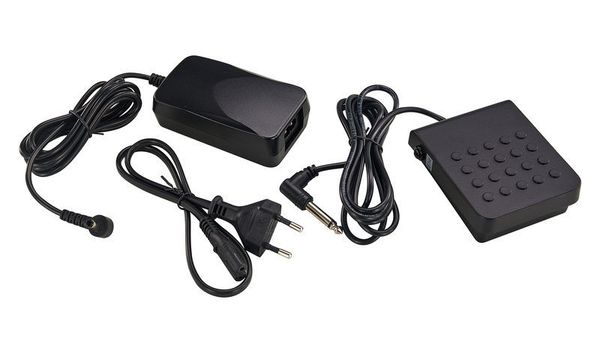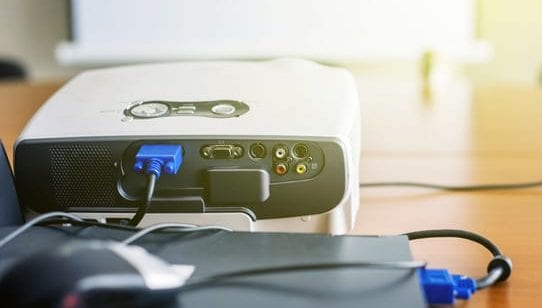Casio Laptops & Desktops Driver
Japanese electronics firm CASIO was founded in 1946 and has been operating as CASIO Computer Co., Ltd. After the company made a name for itself in the 60s as a producer of electronic computers and desktop calculators, and causing a stir in the mid 70s with the development of multifunctional digital watches, CASIO began producing.
- Casio Driver Download
- Casio Keyboard Usb Driver Download
- Casio Laptops & Desktops Drivers
- Casio Phone Drivers
: Compatible (Installation of special driver not required.): Compatible, with some limitations.: Not compatible.1 Both the IN and OUT devices may be displayed during MIDI device selection with the MIDI application software. Select the appropriate IN/OUT device names. Mistakenly selecting 'IN' for an OUT device or 'OUT' for an IN device when using SMF Converter will cause the 'The MIDI device. Casio’s primary objective is to make products that work reliably in any environment, and can always be used with safety.
Casio Cassiopeia was the brand name of a PDA manufactured by Casio. It used Windows CE as the Operating system. Casio was one of the first manufacturers of PDAs, developing at the beginning small pocket-sized computers with keyboards and grayscale displays and subsequently moving to smaller units in response to customer demand.
Cassiopeia A-10, A-11 and A-11+[edit]
Casio Driver Download
- Operating system: MicrosoftWindows CE 1.0 Handheld PC edition
- Size: 175 mm x 92 mm x 26.5 mm :: 380 g
- CPU: Hitachi SH-3 at 44 MHz
- Memory: RAM 2 MB and ROM 4 MB
- Display: FSTN LCD, 480 x 240 Pixel, 4 shades of gray
- Interface: Serial and IrDA (ver. 1.0)
- Expansion slot: PC card Type II
- Battery: 2x AA, up to 20 hours of running time; CR2032 for memory protection
- Input: Keyboard and Touch Screen
- Extras: Speaker
- 1997 Feb[1]
Cassiopeia A-20, A-21S, A-22T, A-23G[edit]
- Operating system: MicrosoftWindows CE 2.0 Handheld PC edition
- Size: 185 mm x 94 mm x 24.5 mm :: 430 g
- CPU: Hitachi SH3 at 80 MHz
- Memory: RAM 8 MB and ROM 8 MB
- Display: FSTN LCD, 640 x 240 Pixel, 4 shades of gray
- Interface: Serial and IrDA (Infrared) (ver. 1.0)
- Expansion slots: CompactFlash Type I and PC card Type II
- Battery: 2x AA,(And rechargeable battery pack) up to 25 hours of running time; CR2032 for memory protection
- Input: Keyboard and Touch Screen
- Extras: Speaker, Microphone
- 1999 May[2]
It was quickly discovered that most consumers wanted smaller devices, so the Palm-size PCs were developed. Japanese models of these units differ in both model number as well as appearance. The E-5x and/or E-5xx models are Japanese versions, colored blue instead of silver. The following versions were developed; A21-S for Student, A22-T for Teachers, A-23G for German with AZERTY keyboard,[3] A-20F for French.[4]
Cassiopeia A-50, A-51, A-55 and A-60[edit]
- Operating system: MicrosoftWindows CE 1.01 and 2.0 Handheld PC edition
- Size: 185 mm x 94 mm x 24.5 mm [5]
- CPU: Hitachi SH3 at 80 MHz
- Memory: RAM 4 or 8 MB and ROM 8 MB
- Display: FSTN LCD, 480 x 240 Pixel, 4 shades of gray
- Interface: Serial and IrDA (Infrared) (ver. 1.0)
- Expansion slots: CompactFlash Type I and PC card Type II
- Battery: 2x AA,(And rechargeable battery pack) up to 25 hours of running time; CR2032 for memory protection
- Input: Keyboard and Touch Screen
- Extras: Speaker, Microphone
Cassiopeia E-10[edit]
Casio Keyboard Usb Driver Download
- Operating system: MicrosoftWindows CE 2.01 Palm-size PC edition
- Size: 80 mm x 120 mm x 20 mm :: 184 g
- CPU: NEC VR4111 MIPS at 69 MHz
- Memory: RAM 4 MB and ROM 8 MB
- Display: FSTN LCD, 240 x 320 Pixel, 4 shades of gray
- Interface: Serial and IrDA (ver. 1.0)
- Expansion slots: CompactFlash Type I and II
- Battery 2x AAA, up to 25 hours of running time; CR2016 for memory protection
- Input: Touch Screen, Microphone, 4 user-configurable buttons and a control pad
- Extras: Speaker and Stereo 3.5 mm headphone jack

Cassiopeia E-11[edit]
- Operating system: MicrosoftWindows CE 2.01 Palm-size PC edition
- Size: 80 mm x 120 mm x 20 mm :: 184 g
- CPU: NEC VR4111 MIPS at 69 MHz
- Memory: RAM 8 MB and ROM 8 MB
- Display: FSTN LCD, 240 x 320 Pixel, 4 shades of gray
- Interface: Serial and IrDA (ver. 1.0)
- Expansion slots: CompactFlash Type I and II
- Battery 2x AAA, up to 25 hours of running time; CR2016 for memory protection
- Input: Touch Screen, Microphone, 4 user-configurable buttons and a control pad
- Extras: Speaker and Stereo 3.5 mm headphone jack
- 1998 Sep[6]
Cassiopeia E-15[edit]
The Cassiopeia E-15 was the last model of Palm-size PC introduced by Casio that used a grayscale display. It appeared at the same time as the E-105, and functioned identically to that device, except for the screen.
- Operating system: MicrosoftWindows CE 2.11 Palm-size PC edition
- Size: 127 mm x 80 mm x 15.2 mm :: 190 g
- CPU: NEC VR4111 MIPS at 69 MHz
- Memory: RAM 16 MB and ROM 16 MB
- Display: FSTN LCD, 240 x 320 Pixel, 16 shades of gray
- Interface: Serial and IrDA (ver. 1.0)
- Expansion slots: CompactFlash Type I and II
- Battery 2x AAA rechargeable, up to 25 hours of running time; CR2032 for memory protection
- Input: Touch Screen, Microphone, 3 user-configurable buttons, a control pad
- Extras: Speaker and Stereo 3.5 mm headphone jack
Cassiopeia E-100[edit]
The first Palm-size PC model by Casio to have a color screen, the E-100 was outwardly identical to the E-15.
- Operating system: MicrosoftWindows CE 2.11 Palm-size PC edition
- Size: 81.2 mm x 132 mm x 20.1 mm :: 255 g
- CPU: NEC VR4121 MIPS at 131 MHz
- Memory: RAM 16 MB and ROM 16 MB
- Display: HAST LCD, 240 x 320 Pixel, 65536 colors
- Interface: Serial and IrDA (ver. 1.0)
- Expansion slots: CompactFlash Type I and II
- Battery: Li-Ion rechargeable, up to 6 hours of running time; CR2032 for memory protection
- Input: Touch Screen, Microphone, 3 user-configurable buttons, a control pad.
- Extras: Speaker and Stereo 3.5 mm headphone jack
Cassiopeia E-105[edit]
- Operating system: MicrosoftWindows CE 2.11 Palm-size PC edition
- Size: 81.2 mm x 132 mm x 20.1 mm :: 255 g
- CPU: NEC VR4121 MIPS at 131 MHz
- Memory: RAM 32 MB and ROM 16 MB
- Display: HAST LCD, 240 x 320 Pixel, 65536 colors
- Interface: Serial and IrDA (ver. 1.0)
- Expansion slots: CompactFlash Type I and II
- Battery: Li-Ion rechargeable, up to 6 hours of running time; CR2032 for memory protection
- Input: Touch Screen, Microphone, 3 user-configurable buttons, a control pad.
- Extras: Speaker and Stereo 3.5 mm headphone jack

Cassiopeia E-115[edit]
- Operating system: MicrosoftWindows CE 3.0 PocketPC edition
- Size: 81.2 mm x 132 mm x 20.1 mm :: 256 g
- CPU: NEC VR4121 MIPS at 131 MHz
- Memory: RAM 32 MB and ROM 16 MB
- Display: HAST LCD, 240 x 320 Pixel, 65536 colors
- Interface: Serial and IrDA (ver. 1.2)
- Expansion slots: CompactFlash Type I and II
- Battery: Li-Ion rechargeable, up to 6 hours of running time; CR2032 for memory protection
- Input: Touch Screen, Microphone, 3 user-configurable buttons, a control pad.
- Extras: Speaker and Stereo 3.5 mm headphone jack

Casio always advertised the fact that their devices could be updated. Casio decided it would not issue an update for the E-100 and E-105, and a lot of owners of the devices complained. Because of the complaints, Casio offered to update the devices to the newest version of the Operating system if the owners sent in the device and paid a fee. Since the operating system was stored in ROM and not flash memory, the only way to upgrade was by replacing the ROM.
Cassiopeia E-125[edit]
Casio Laptops & Desktops Drivers
- Operating system: MicrosoftWindows CE 3.0 PocketPC edition
- Size: 81.2 mm x 132 mm x 20.1 mm :: 256 g
- CPU: NEC VR4122 MIPS at 150 MHz
- Memory: RAM 32 MB and ROM 16 MB
- Display: HAST LCD, 240 x 320 Pixel, 65536 colors
- Interface: Serial/USB and IrDA (ver. 1.2)
- Expansion slots: CompactFlash Type I and II
- Battery: Li-Ion rechargeable, up to 6 hours of running time; CR2032 for memory protection
- Input: Touch Screen, Microphone, 3 user-configurable buttons, a control pad.
- Extras: Speaker and Stereo 3.5 mm headphone jack
After using the MIPS processor in the E-15 and the E-1xx series devices, the E-200 switched over to the StrongARMCPU, in keeping with Microsoft's specifications.
Cassiopeia E-200[edit]
- Operating system: MicrosoftPocketPC 2002
- Size: 82 mm x 130 mm x 17.5 mm :: 190 g
- CPU: IntelStrongARM 1110 at 206 MHz
- Memory: RAM 64 MB and ROM 32 MB
- Display: TFT, 240 x 320 Pixel, 65536 colors
- Interface: Serial/USB and IrDA (ver. 1.2)
- Expansion slots: SD-Card (MultiMediaCard) and CompactFlash Type I and II as well as PC card via an extension module
- Battery: Li-Ion rechargeable, up to 12 hours of running time CR2032 for memory protection
- Input: Touch Screen, Microphone, 3 user-configurable buttons, a control pad.
- Extras: Speaker and Stereo 3.5mm headphone jack
- 2001 Dec[7]
Successors of the Cassiopeia E-200[edit]
After experiencing difficulties in the market following the release of the E-200, Casio decided not to produce any further units for the US and European markets, instead focusing on the Japanese market. Some Japanese-only models are the Cassiopeia E-3000, using the PocketPC 2002 operating system, and the DT-10 with Windows Mobile 2003.
Other Models[edit]
Casio Phone Drivers
- C120/C140/C120+ are Compaq-branded equivalents to the Cassiopeia A-10/A-11/A-10+.[8]
- E-55 Japanese version of the E-15
- E-707 Japanese model with wireless/phone antenna and both SD and CF card slots.
- E-5xx Japanese versions of the E-1xx models.
- EM-500 USA model, slightly smaller than the USA E-1xx with 16MB RAM and came in multiple colors.
- E-700 Japanese version of the EM-500, but with 32MB RAM and came in many additional colors like white, carbon, silver.
- E-750 Japanese successor to the E-1xx series with 32MB RAM and a 200 MHz MIPS CPU.
- E-3000/3100 Later Japanese model with 400 MHz XSCALE CPU and CF + SD card slots. 3000/3100 ran PPC/CE.NET respectively.
- SX-45 designed in cooperation with Siemens, this is a Cellphone integrated with an E-125.
- BE-300 Pocket Manager (not a Pocket PC) running on Windows CE 3.0 with a Casio-designed user interface. Released in 2001.
- PA-2400W (SH3 80 MHz, 8 MB RAM, 16 MB ROM, 480 x 240 4-level grayscale touchscreen, Windows CE 2.11)
- IT-10 M20 from 2005 Rugged (IP54 Rated) Windows Mobile 2003/2 416MHz Intel PXA270 (800 MIPS at 624 MHz) 64MB RAM, 64MB ROM 3.7' VGA Transflective (640 x 480 TFT, 65536 colours) screen with 2,300 mAh Lithium Ion battery (up to 27 hours use) & CompactFlash and SDIO slots [9]
References[edit]
- ^https://phonedb.net/index.php?m=device&id=198&c=casio_cassiopeia_a-10
- ^https://phonedb.net/index.php?m=device&id=208&c=casio_cassiopeia_a-23g
- ^https://www.willhaben.at/iad/kaufen-und-verkaufen/d/casio-cassiopeia-a-23g-308618444/
- ^http://casio.ledudu.com/pockets.asp?type=2361&lg=eng
- ^https://pc.watch.impress.co.jp/docs/article/970625/casio.htm
- ^https://phonedb.net/index.php?m=device&id=51&c=casio_cassiopeia_e-10
- ^https://phonedb.net/index.php?m=device&id=4&c=casio_cassiopeia_e-200
- ^https://www.hpcfactor.com/hardware/devices/specification.asp?d=24
- ^https://www.fieldtechnologiesonline.com/doc/cassiopeia-it-10-rugged-pocket-pc-0001
External links[edit]
